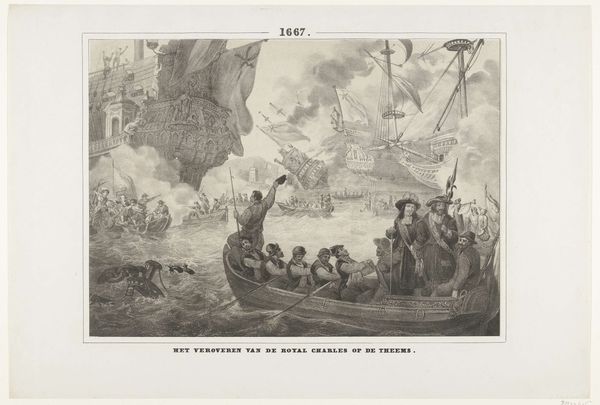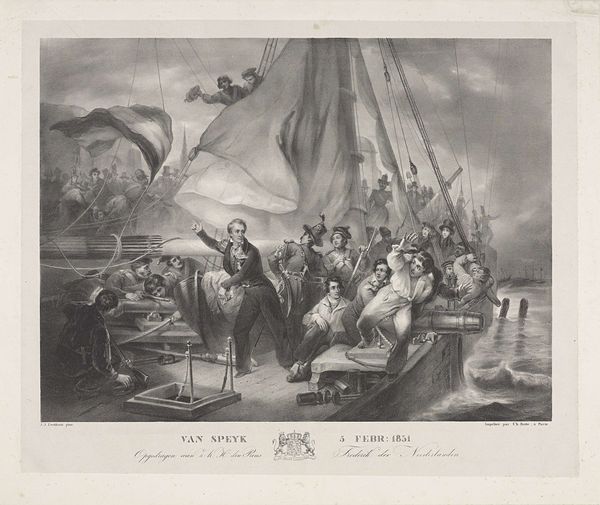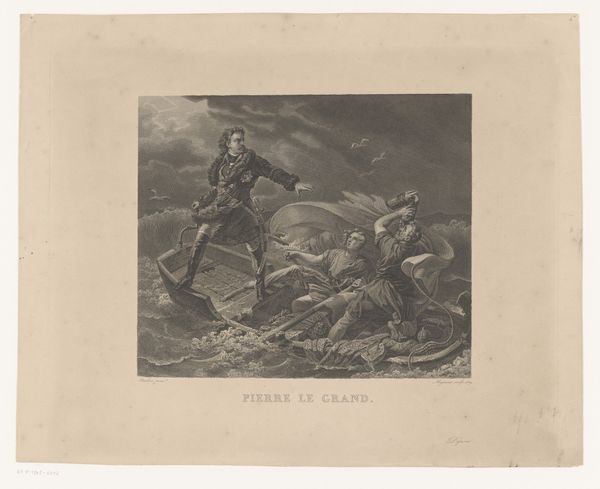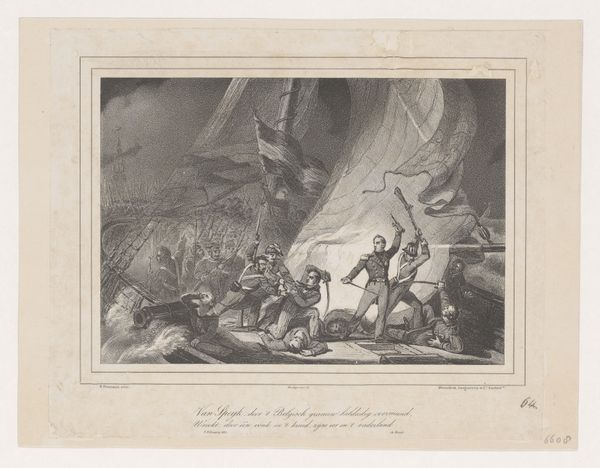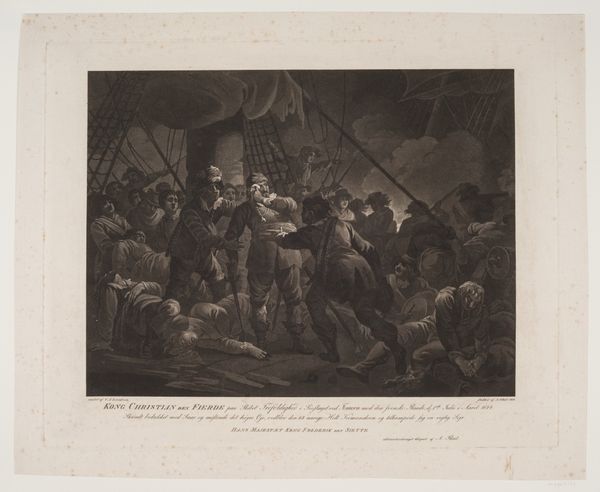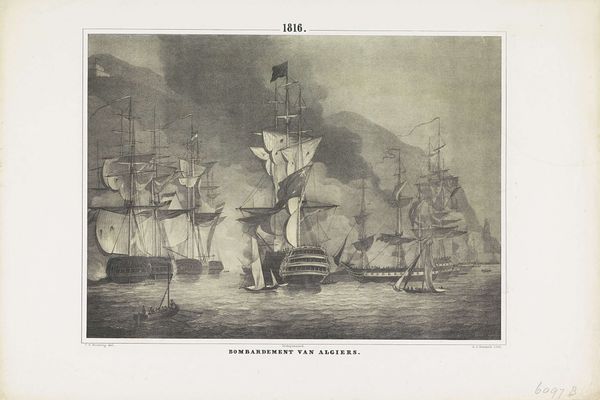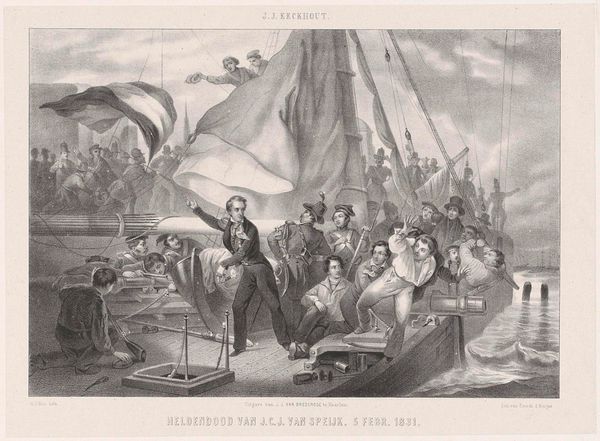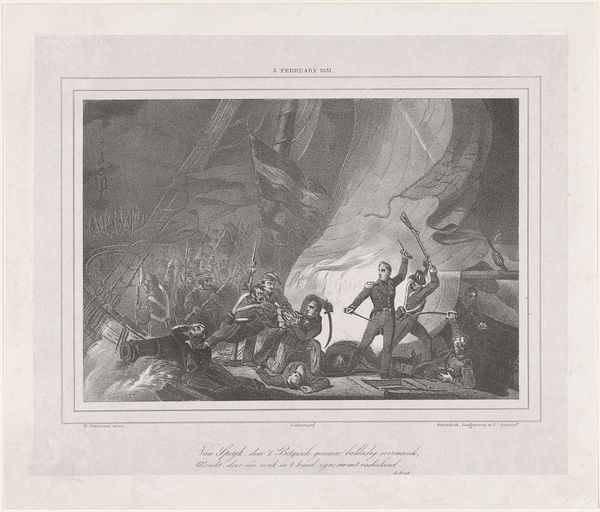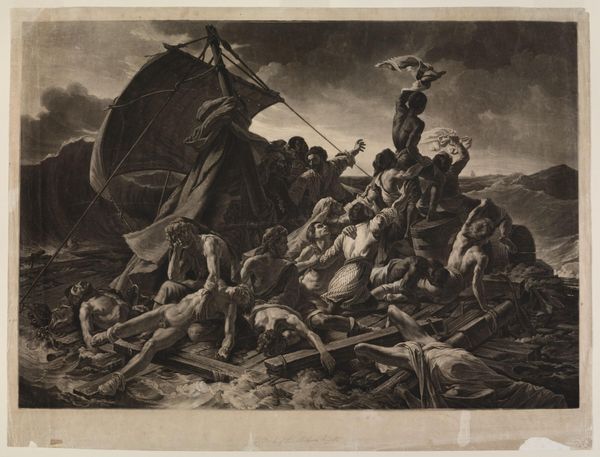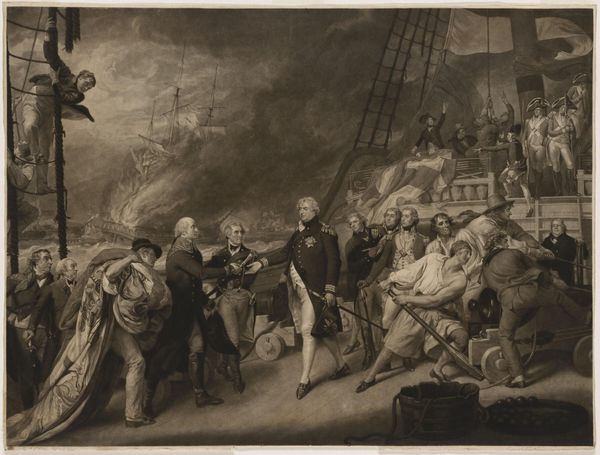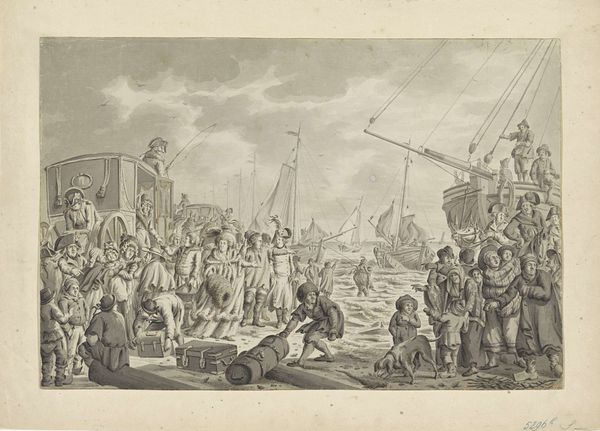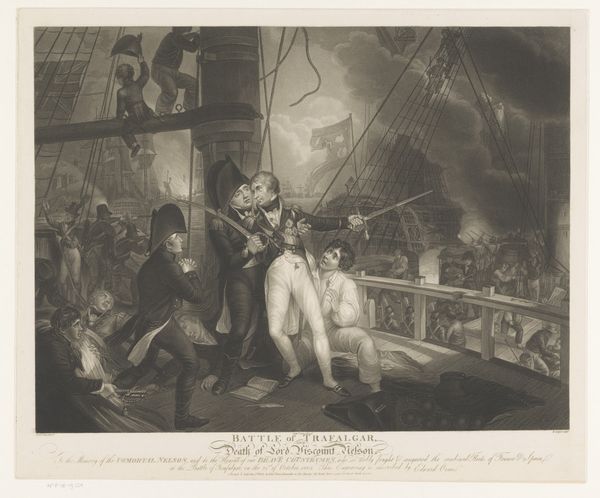
Jan van Speijk op het punt de lont in het ruim te gooien, 1831 1853 - 1890
0:00
0:00
Dimensions: height 492 mm, width 564 mm
Copyright: Rijks Museum: Open Domain
Editor: We're looking at "Jan van Speijk op het punt de lont in het ruim te gooien, 1831," an engraving made sometime between 1853 and 1890. It's incredibly detailed, almost chaotic in its composition. The print appears dominated by dramatic gestures and seems to portray a rather overwhelming sense of impending doom. What do you notice in its visual construction? Curator: The print strikes me with its effective use of chiaroscuro. The sharp contrast between light and shadow sculpts the figures and heightens the drama inherent in the scene. Consider the focal point: Jan van Speijk, rendered brightly amidst the surrounding gloom. Observe how the artist uses linear perspective, with the ship's masts receding into the distance, to create depth and amplify the sense of claustrophobia. It's a very complex work. Editor: I see what you mean about the light, it creates such intensity, but the perspective also throws me off. Is it successful, in your opinion? Curator: That disruption may very well be the artist's aim. Consider that the imperfect perspective and crowded composition create tension, forcing the viewer to confront the disarray and violence. It avoids a more composed and stable image, contributing to the emotional power of the engraving. The emphasis is less on literal accuracy and more on evoking a powerful response through visual means. Editor: So, even the aspects that seem "wrong" contribute to the overall impact. It’s quite interesting how those formal choices really shape our experience of the artwork and contribute meaning. Curator: Indeed, and attending closely to the elements—light, perspective, and composition—is paramount to understanding art as an articulation of something beyond a straightforward narrative.
Comments
No comments
Be the first to comment and join the conversation on the ultimate creative platform.
